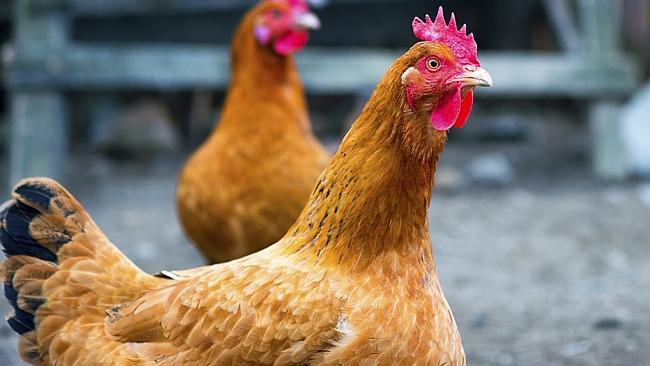Chicken killers: Southampton Homestead among few micro abattoirs
Most chicken we eat is produced in huge, industrial-scale abattoirs, but there is a small but growing alternative.

Tucking into a roast chook, you may start thinking about issues other than how good it is (or not, as the case may be).
Now that we’re all increasingly concerned with issues of provenance and animal welfare, you may well be interested in knowing where the bird came from and how it lived. But as to how it met its end? Hmmm. The death business is as contentious as it is confronting and, most times, we will opt for blissful ignorance over anything more specific.
Fact is, chicken consumption is on the rise (it’s way ahead of beef and pork) and demand is being met by vast vertically integrated corporations — such as Baiada Poultry and Inghams Enterprises — in a macro-abattoir system that’s hard to stomach for some. But as consumer demand for pastured, premium chicken grows, so too does a small but significant alternative to the big business of animal dispatch: the micro-abattoir.
It’s 6.30am at Southampton Homestead, 240km southwest of Perth. Jeff Pow carefully lifts chooks from their outdoor enclosures into crates to make the 300m journey from a pasture rich in chicory, lucerne and rye grass, up the farm track to a rectangular box no bigger than a sea container. One of Australia’s handful of micro abattoirs, its existence — preceded by an eight-month bureaucratic slalom — has resulted in a steady stream of interested observers to the property.
By keeping slaughter on-farm and linking it to a direct sales model, Pow and his wife Michelle McManus are cutting out the middlemen. As Pow says, there were “too many fingers in the pie, too many people between the family farm and the customer” in the old system.
It’s all part of a movement to “reclaim the terms of trade”, as he says. To use the mantra of a growing number of small producers, the aim is to become price-setters, not price-takers.
On the other side of the country, Grant Hilliard of specialist retailer Feather and Bone outlines a stark picture in NSW where smaller poultry producers have three options for slaughter: one in the Sydney outskirts, another six hours away on the far south coast and a micro abattoir on the mid-north coast.
Outside of those options there’s little that Hilliard knows of. “There’s simply no other industry in Australia that restrictive,” he says. The picture doesn’t much improve in other states; one reason why on-farm micro and co-operative set ups are gaining momentum.
At Southampton the kill is swift, respectful and surprisingly quiet. The birds are electrically stunned, upturned into a cone and given two cuts. There’s a brief kick of the legs and then a slow contraction of the feet until there’s stillness. The whole process takes 30 seconds, overlooking the bucolic scene of a valley being regeneratively farmed.
“When people think of abattoirs they think of smoke stacks and effluent,” says Pow. This scene couldn’t be further removed from that. On the day of our visit, four locals happily work the tools, from the kill to the evisceration, dressing and packing.
Pow processes just 400 birds a week, a mix of Ross (which makes up most of the Australian chicken market) and Sommerlad (the heritage-style cross that’s ruffling feathers in the food world), a breed he’s increasingly leaning towards. That 400 against the tens of thousands processed at the macro end highlights the divide between big and small business and the dearth of small-scale operations. Centralisation, increasing costs and regulatory burdens have forced the closure of many smaller abattoirs during the past dozen years, leaving farmers with little or no choice.
Australian Food Sovereignty Alliance president Tammi Jonas, of Jonai Farms near Daylesford, talks of the challenges of replacing infrastructure.
“Getting back local options is going to be a challenge as the viability of regional abattoirs can be difficult to demonstrate,” she says. While Jonas uses larger industrial abattoirs for her pigs out of necessity, she is frank about the need for alternatives, such as small regional co-ops or mobile micro-abattoirs, the latter a less capital-intensive option as yet untried in Australia.
Pow and McManus are encouraged by what they see as a growing consumer push for transparency in food production. For some, concern centres on issues of food miles or animal welfare, others question the economic impact of the industrial system on farmers and their local communities. McManus says customers are asking more questions at farmers markets. “It’s what the community wants,” she says. “Genuine, true choice in their buying, not the myth of choice.”
